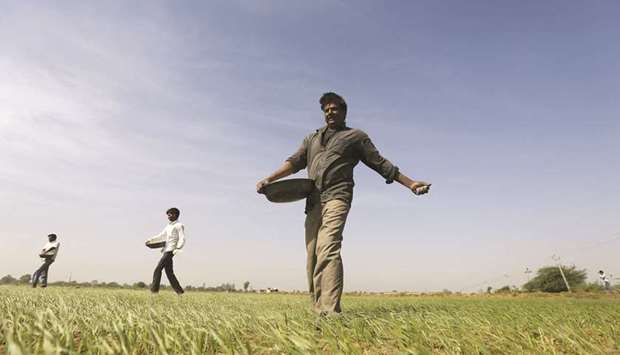India’s effort to boost consumption through government spending and low interest rates is paying off, with the economy gaining strength just as a new coronavirus variant emerges as the top threat to a global recovery.
The South Asian nation remains on track to post the fastest growth among major economies as most sectors, including services and exports, show momentum. Gross domestic product will expand 9.3% in the fiscal that ends March, according to a Bloomberg survey of economists, a touch faster than the 9.2% forecast last month.
The recovery is “led by the services sector, with individual mobility back to pre-Covid levels, and ultra-accommodative financial conditions,” as well as higher government expenditures, said Gaura Sen Gupta, an economist with IDFC First Bank in Mumbai, forecasting growth of 10% this year.
While she said it’s too early to predict the impact of the omicron strain, the cost of lockdowns has been falling as they become more targeted and shorter.
Official data published on Tuesday showed GDP in the July-September quarter grew 8.4% from a year ago, a tad faster than the 8.3% median estimate in a Bloomberg survey. That’s slower than 20.1% growth in the previous quarter – which largely reflected a bounce back from last year’s crash – but marks a fourth straight quarter of expansion.
India loosened fiscal and monetary policy to power through the pandemic-induced slump, and has vowed to keep it like that for as long as necessary to support growth.
Finance Minister Nirmala Sitharaman has made infrastructure spending a priority ahead of the February budget, where she will give an annual plan of the government’s expenditure and revenue goals.
Meanwhile, the Reserve Bank of India is expected to leave its record low interest rates unchanged when it announces monetary policy next week. The low interest rate regime is expected to drive growth even when policymakers scale back the support extended during the pandemic.
That, along with a faster pace of vaccinations and a decline in cases, has fed a pickup in the activity. From the nation’s dominant services sector to manufacturing, and from robust exports to rising tax collections, most high-frequency indicators are showing signs of strength.
Agriculture, which is the primary source of livelihood for more than half the nation’s population and emerged as the only bright spot when the pandemic ravaged the economy, is expected to keep the growth momentum rolling after a normal monsoon this year.
There are still risks to the outlook. Rising input costs due to supply-side disruptions and global commodity prices are squeezing margins of companies. That’s dampened the recovery in some sectors such as automobiles, particularly sale of two-wheelers, which are an indicator of rural demand. Soaring fertilizer prices are also adding to worries with risks of lower harvests.
The latest threat comes from the omicron variant, which has triggered the return of travel restrictions. While the Indian economy is yet to see any impact, the news is weighing on the sentiments in the currency and stock markets.
There is a “broad based improvement in underlying economic activity,” but the spread of omicron “remains a risk”, said Sameer Narang, an economist with ICICI Bank Ltd in Mumbai.

Farmers sprinkle fertiliser on a wheat field on the outskirts of Ahmedabad, India (file). Agriculture, which is the primary source of livelihood for more than half the nation’s population and emerged as the only bright spot when the pandemic ravaged the economy, is expected to keep the growth momentum rolling after a normal monsoon this year.
